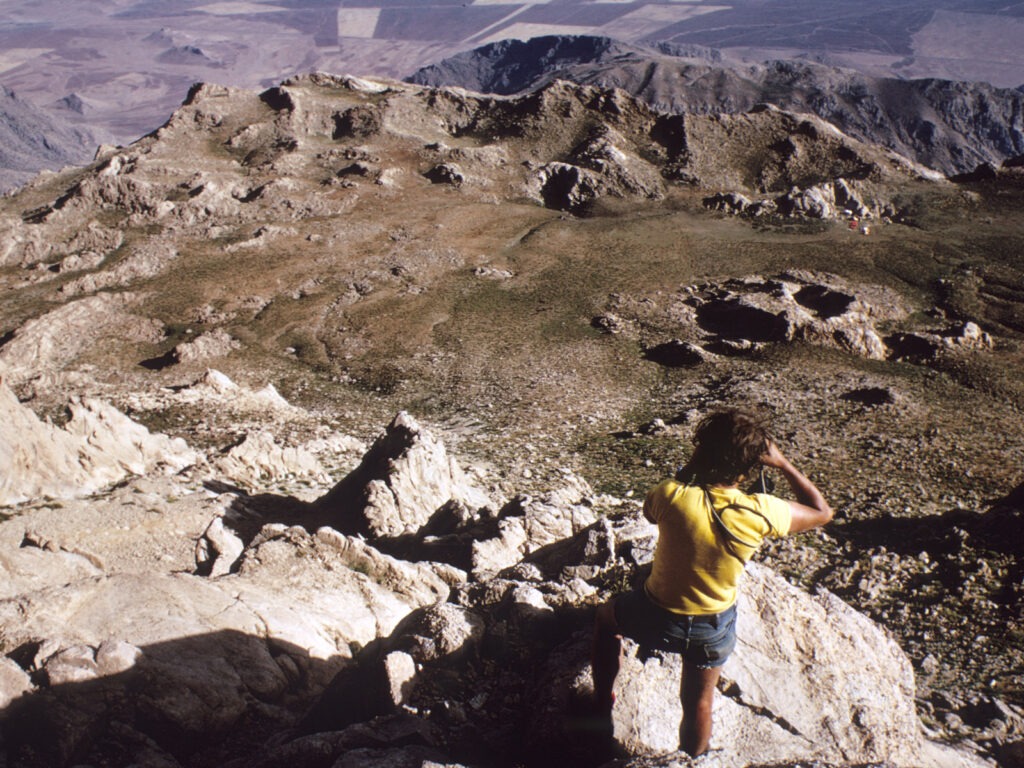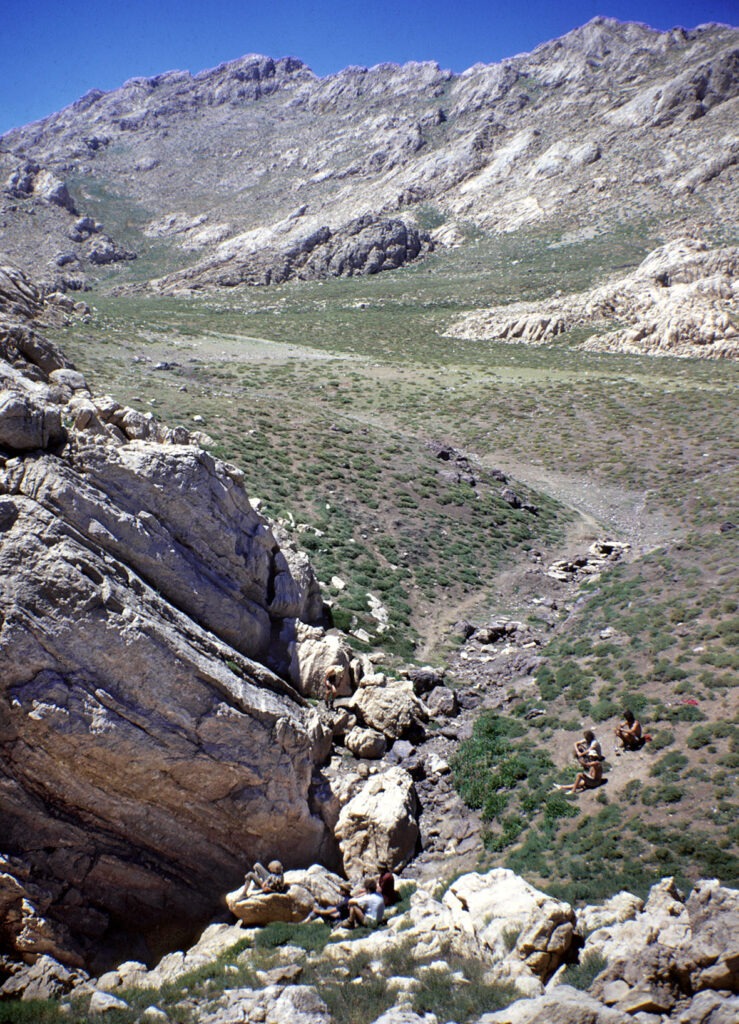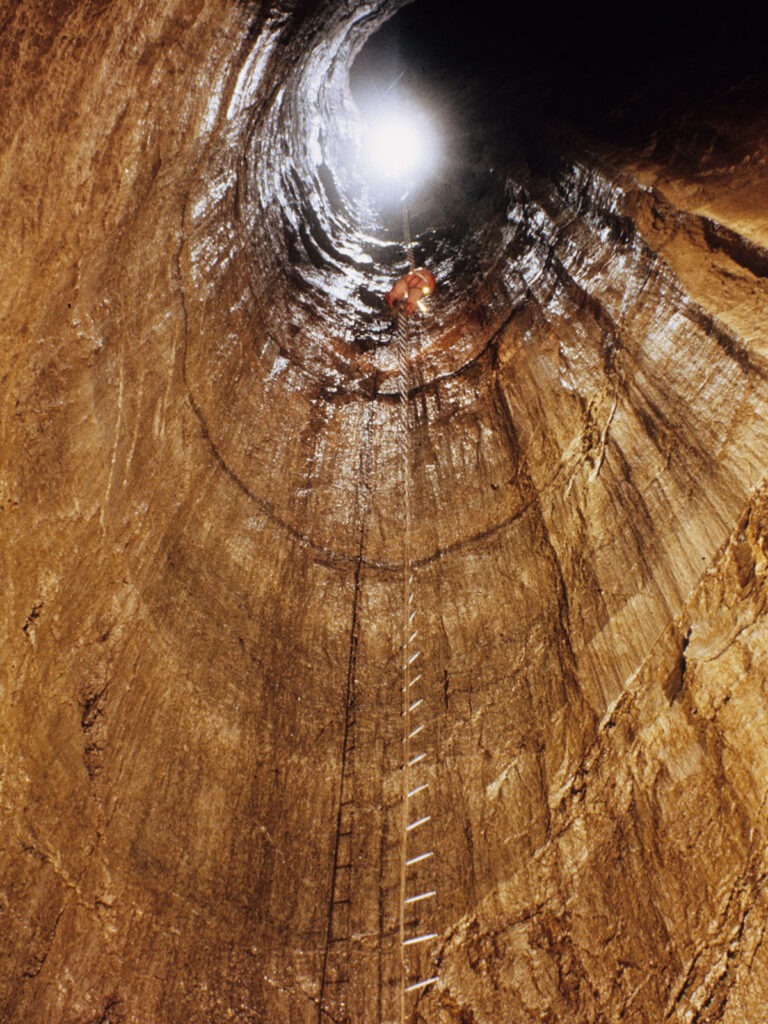The Ghar Parau Foundation is a 100% voluntary-based charity that manages an investment fund to provide grant aid to assist British caving expeditions to all parts of the world. The fund focuses on those expeditions which include an element of innovative exploration or scientific study. We are also particularly keen to encourage young cavers into expedition caving to maintain an active caving community in years to come.
The Ghar Parau Foundation is now an independent charity. It has a capital fund that is invested and the accrued interest is distributed in the form of grants to caving expeditions who apply and fit the foundation’s criteria.
In recent years, the accrued interest has been relatively small and the Foundation has been supported heavily by donations each year from the national body for caving in the UK (BCA – The British Caving Association) and Hidden Earth (the annual UK caving conference). Without the continual support of these two bodies, the yearly grant distribution would be substantially reduced. The Ghar Parau Foundation is indebted to these organisations for their continued support. Follow the links to find out more about them.
Find out more about making a donation to The Ghar Parau Foundation by visiting the GPF donation page.
History
The Ghar Parau Foundation was the brainchild of David Judson. After fundraising for the first trip to Iranian Kurdistan in 1971 had largely failed he felt very strongly that rather than cow-tow to organisations run by climbers and/or surface explorers, e.g. the Mount Everest Foundation and the Royal Geographical Society, British Caving should have its own internal funding source. The 1972 expedition was lucky enough to enlist the membership of journalist/PR man, Randal Coe of the CPC. He, in turn, introduced David to an outdoor market savvy literary agent, one George Greenfield of John Farquharson Ltd, Red Lion Square, London, and between them, they raised considerable funding from book and newspaper rights, and other external sources.
This went so well that on their return from Iran, late in 1972, David persuaded the team that rather than distribute the ‘profits’ amongst themselves they should set up a charitable foundation – in effect a Mount Everest Foundation for British cavers. The central principles behind the Mount Everest Foundation were analysed and picked up on, funding should not be for repeat trips to well-known locations such as the Gouffre Berger, but for well-researched projects to remote and/or little-known areas, and/or for innovation, whether that be explorational, technical or otherwise. These simple broad principles have now stood the test of time, found to be good, and still remain today.
Initially, the funding was modest, but a start had been made and small grants were first given in 1974. Quite soon other financially successful caving expeditions came along, particularly those that followed in the wake of the major Royal Geographical Society project to Sarawak, Borneo in 1978. A succession of these contributions bulked the Ghar Parau Foundation capital fund considerably and thereafter it grew and grew. At times extra distributable funding was found from external sources, the UK Sports Council, The Foundation for Sport and the Arts, David Hood of Pace Micro Technology fame, and others, but today the Foundation is only able to rely upon interest gained from its own capital fund and an annual grant from the British Caving Association. Other funding, capital, or immediately distributable funding is constantly sought and always welcome.
GPF legacy
Today, the Ghar Parau Foundation finds itself having assisted British caving ventures to almost every limestone region in the world – as well as a few non-limestone ones; from Castleguard – cave exploration beneath a glacier – to the Blue Holes of the Caribbean; and from Mongolia to the tropical rainforests of Borneo and New Guinea. There have also been grants provided in support of technological advances such as cave detection and cave surveying and its dynamic presentation. Although the largest and most speleo-prolific limestone area, southwest China is not directly covered, it is handled via Andy Eavis and the China Caves Project, with applications being made to Ghar Parau Foundation in the first instance.
Each year a small number of applications are passed on with the Foundation’s backing to the Mount Everest Foundation for further funding. When available finance allows, additional funding is also provided by the British Caving Association. Criteria here are centred more upon technically challenging and/or endurance testing projects. Again applications are made to the Ghar Parau Foundation, which deals with all administration matters.
The Ghar Parau Foundation has been an unadulterated success, in the main for young British cavers, who like David Judson, quickly realised that whilst the challenges of caving within the British Isles were good fun, there were places in the wider world that had much more to offer, almost limitless in scope! Additional funding is always sought in order to assist and support young people seeking to take on this superb challenge.


